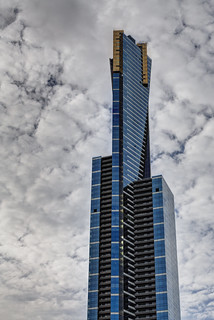
For folks who aren’t architects (like me), we don’t give much thought to building design. We blissfully carry out our lives in and around structures. I’ve had the privilege recently to try to understand how a building takes shape during the design process. I’ve discovered that there seem to be 2 methods at either ends the same spectrum. Top-down and bottom-up. Each has an profound affect on not only the designs an architect produces but also how they run their business, engage with clients and consultants.
Top Down
This approach is often driven by a strong personality (usually a director) with a creative vision. That creative vision is influenced predominantly by that individual’s style and personal tastes. Clients select these architects because there is often something in the design that resonates with the client. In top down architecture, aesthetics reign supreme over most other design factors. With top down there is often a piece of the architects personality in the design. So any factor that threatens that design is often taken personally.
The advantage to top down is that clients know what they’re getting. There is often an obvious design language that shines through no matter what the context of the project. Clients are drawn to it and will select an architect because of it. The disadvantage is that the architects desire can become a risk factor for the client too. If they’re too stubborn to challenge their own design language for the good of the project, clients can feel like they’re not getting the outcome they want. Top down architecture is a challenging balance between client needs and aesthetic form. It often assumes that you can’t have both - its either/or.
Eureka Tower by Fender Katsalidis
Bottom Up
This seems to be an emerging practice, particularly in Melbourne. Bottom up doesn’t start with any defined design language. The design starts with client needs first and foremost aswell as site context. Its a far more fluid process where both artistic and scientific inputs are related to the design during various iterations. Aesthetics are still important, but they’re more responsive than oppressive. This can result in some really creative designs that clients love. The type of client that selects this approach is a little more adventurous. Yet they still want to drive the design process - they want a piece of their personality in the design - not just the architect. They want to use the design as a way to improve project outcomes.
Bottom up assumes that you can have striking form and meet the needs of clients. It is a both/and approach compared to top down. Architects that master the bottom up approach become known not for design language or style, but for project outcomes. Bottom up also requires architects to really push boundaries of construction methods, planning regulations and engineering assumptions. These things are not for the feint hearted.
Abode 318 by Elenberg Fraser
Which is best?
I think its about personal preference really. I tend to sway towards bottom up, mainly because I believe in this approach to other areas in business (like The Responsive Organisation movement). Of course there is also another way to look at this. That is top down and bottom up are really a spectrum. Different firms would sit at different places on this spectrum and perhaps change depending on the market conditions. In any case, I find the complexity behind the process fascinating. It makes me look at and experience buildings entirely differently. Observing them and wondering - how did they arrive at that design outcome?







